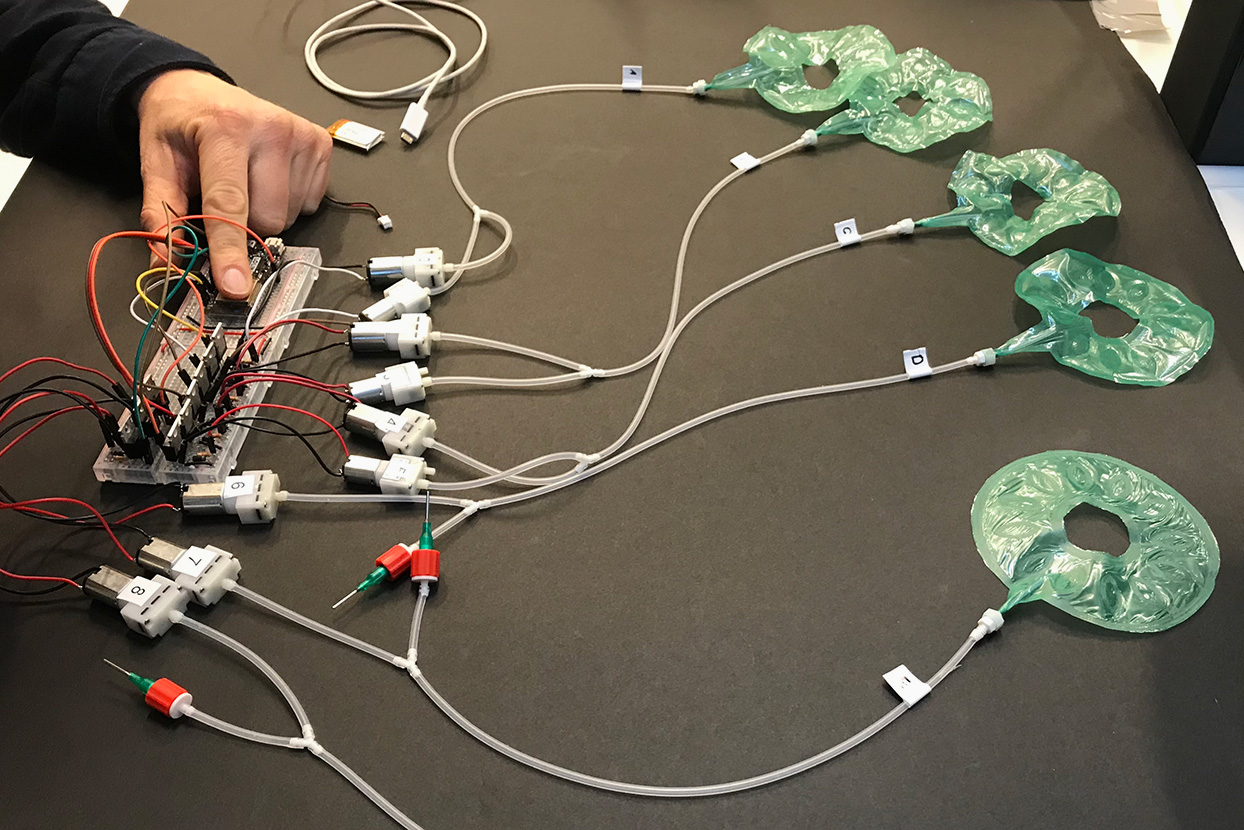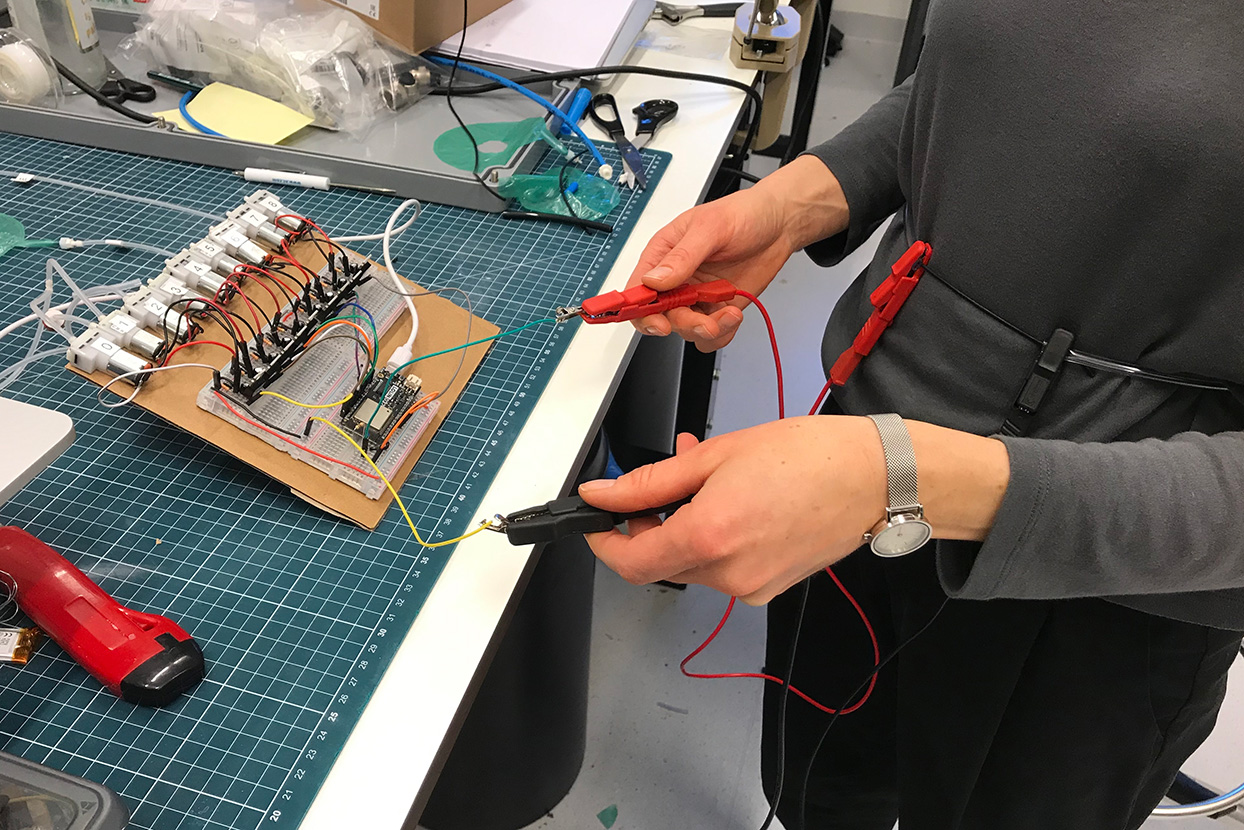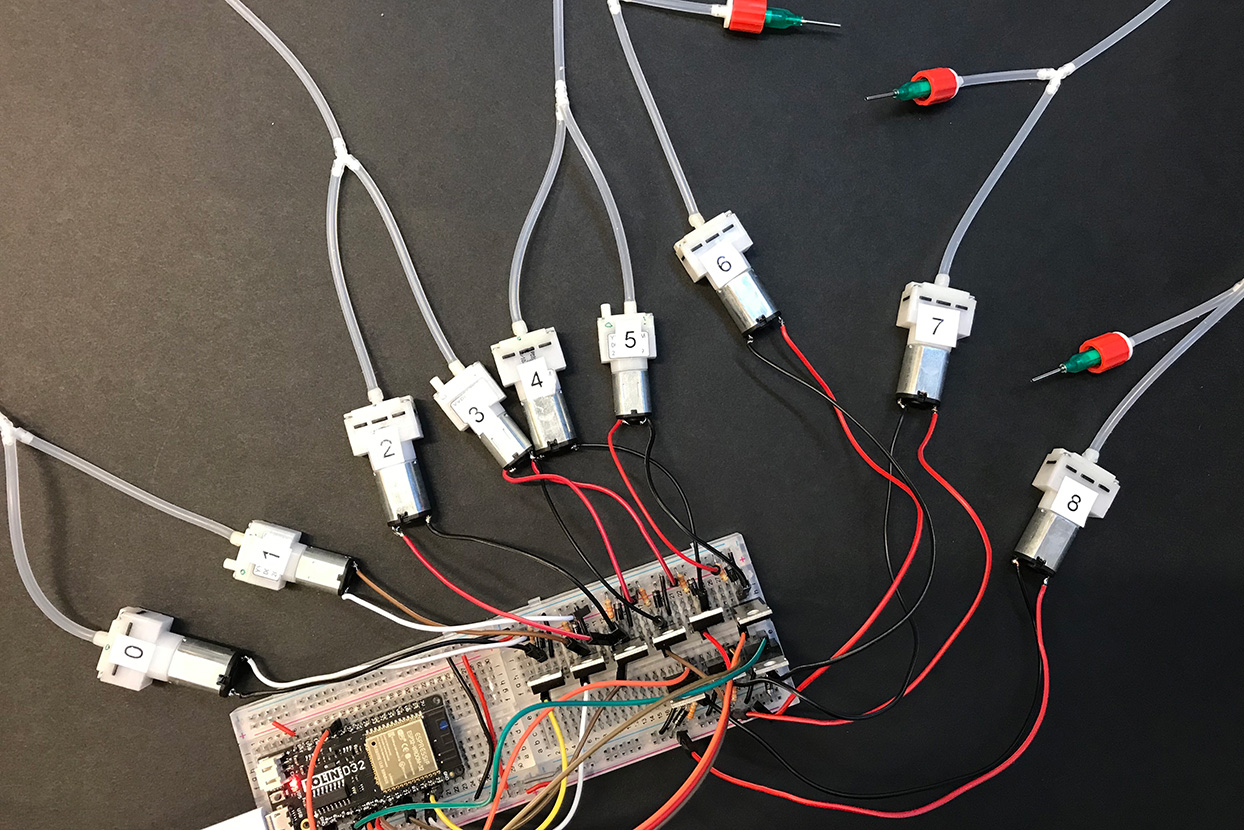Out of Context: The Medical Body and the Lived Body
Artistic Research into the Complex Relationship between Health and Healing
December 10, 2021essay,
The technological lens of modern medicine focusses on the biological mechanisms of the human body, scanning for malfunctions and deviations from the statistically verified norms of body data. This technological probe is not available for collaboration, nor does it invite feedback from its object of study. It encapsulates information about human health within a closed set of parameters, creating a disembodied biological system, devoid of a social context.



Situated inside the institutional context of the hospital, the living sentient subject of the biomedical lens (the patient) is made passive, rendered incapable of contributing to the interpretation of their own body data. They are required to enact a submissive role in relation to their health, and refrain from sharing the background noise of their lived-body experience. They patiently await the specialist’s pronouncement on their course of action, a pharmaceutical treatment – a hard technology1 engineered through generations of technological observation of cellular misbehaviour, of biological mechanisms analysed in isolation.
The scope and complexity of chronic ill health is often more complex than the scope of the diagnostic tools used to observe and understand it, no matter how sensitive or sophisticated these tools are deemed to be. Furthermore the chronic nature of some diseases asks the patient (with or without medicine) to develop a lifelong awareness of the disease and adapt to its needs to improve their health and quality of life. In the same way that the human body adapts to factors that have caused the disease, the diseased human body needs to adapt to its new condition, to re-stabilise and regain a sense of health. Therefore states of health are continuously evolving. I argue that ‘sensing’ these states of health has to be understood as an internal process owned by the patient. It is a process of observing and recognising which external (environmental) and internal (biological and behavioural) factors may elevate or reduce disease activity. This is an entirely different process of observation to the external, closed-system medical imaging technology, which can only detect the behaviour and actions of a disease with biomarkers that fix definitive states of health.
These thoughts and reflections have emerged over the past ten years of experience as a patient and biomedical research subject, with the autoimmune disease Multiple Sclerosis (relapsing and remitting).
The intimate truth of my disease is observed by high-powered magnetic resonance passing through my body’s fluids and organs, detecting scars, and past and present disease activity, like an inverse submarine radar scanning the ocean that is my body. A permanent prognosis on how ‘well’ this vessel is, is then assigned to me, the observation, however, is not mine.
As an artist with insights into and experiences of chronic healthcare, I made use of the space that was created by the KABK Research Group to respond to this situation. I assembled knowledge and tools for the body from yoga and movement practices, together with research into techniques from soft robotics. To begin to develop artistic forms to express and visualise the ongoing experience of health and to reflect on the complex relationships between illness and health.
While researching techniques from dance and movement practices that attune and deepen an inner body awareness, I connected with two artists who generously shared their experience, knowledge and insights. During a workshop and mentoring with Ria Higler, a movement researcher, choreographer and teacher at the School for New Dance Development, Amsterdam, and co-creation sessions with dancer Arad Inbar from ICK Amsterdam, I learned how to enter altered states of perception by shifting my attention and focussing on various internal physiological processes. Through this practice I found I could move with a different body from the one I had previously experienced and understood. During the movement practice, I felt with greater sensitivity to the impact of the environment on my body, and my body onto the environment. I learned to yield2 from the physical impressions of the environment and other dancing bodies, and sense the environment as it yielded with my contact. Most importantly, I learned that our perception and experience of the body is not fixed, it can and does morph. Higler encourages her students to ‘read and not judge... drop the mind in the body’.3 This practice enabled me to deter rational judgement or thought and prepare my consciousness to move with impressions from the external environment, while zooming into the sensitivity of internal micro-movements, the fluids and forces that move the body.
During co-creation sessions with dancer Arad Inbar at ICK Amsterdam in May 2019, we studied and adapted a series of methods from the Double Skin Double Mind (DS / DM) method developed by Emio Greco and Pieter C. Scholten. DS / DM is ‘based upon four basic principles: Breathing, Jumping, Expanding and Reducing. With the DS / DM method, you achieve a new physical and mental awareness in which intention and form coincide.’4 In these explorative sessions with Inbar, the physical movement was initiated from the internal movement of the breath. The breath was an interesting place for us to start because it can be controlled both consciously and subconsciously. Consciously slowing down the breath is widely known to induce a sense of relaxation by shifting the nervous system into the parasympathetic state, which is necessary for rest, healing and recovery. Breathing exercises are the foundation of many ancient health practices such as yoga and meditation, which will be touched on later. Furthermore, the organ of the lungs can be easily sensed and manipulated by the surrounding muscular skeletal system, enabling one to feel the lungs expanding and contracting as we breathe.
Over the course of three days of movement research, Inbar and I focussed our attention onto the micro movements inside the body, searching for movement techniques that could initiate a finer perception of the subtle changes within the body. Following each experiment, we discussed our experiences, questioned where our attention was guided and articulated the movement qualities that enabled these experiences. These interviews were transcribed and from this documentation, I distilled and defined terms such as ‘re-configuration’, ‘suspension’, ‘tipping points’,’ balance in movement’, ‘floating’, ‘expansion’ and ‘vessel’, to encapsulate the essence of the movement qualities we had experienced.
These keywords became signifiers of movement that could be applied to the creation of a soft robotic artwork, becoming the movement notation from which a choreography could be created. This process was inspired by the approach to dance notation in the work of ICK artistic directors Emio Greco and Pieter C. Scholten (EG | PC), and dancer and researcher Bertha Bermudez.
Words are considered as important as movement, they are part of their critique of the western dualist perspective on the body. ‘Fra cervello et movimento’, between brain and movement, they proposed a dance trilogy where in between two there is a space of unison. The role of words plays an important part in trying to understand such a space.5
Beginning in October 2019, I was a guest researcher once a week at the Soft Robotic Matter group at AMOLF, Amsterdam. Through desk-based research and material experimentation, I studied the engineering principles and applications of soft robotics, which could embody the movement qualities of the keywords that Inbar and I had generated, during the movement research at ICK Amsterdam. The AMOLF lab is a workshop space, with machines and tools that can produce and reproduce soft robotics. The lab is also used to run, observe and document durational tests and scientific hypotheses. It is the space where the abstract formulas of physics meet with the tactile material world in all its complexity and unpredictability. One particular project that inspired me was research led by PhD candidate Agustín Iñiguez Rábago, under the supervision of Soft Robotic Matter lab leader Bas Overvelde. This research employed pouch motors6 using pneumatic actuation (air force), to inflate one or more airtight chambers to create movement within the structure. The chambers were made by heat sealing two thermoplastic sheets in different geometric forms. The air channels and folds in the surface of the geometric forms created tension across the surface of the thermoplastic sheets, and when inflated the flat two-dimensional forms were pulled in different directions. The geometric forms of the pouch motors were derived from the origami-inspired metamaterial research of Overvelde and Iñiguez-Rábago.7 The effect of this periodic architecture-created tension, expansion, suspension and reconfiguration in the forms, which could in turn be actuated in a rhythmical fashion using small pneumatic motors controlled by Processing and an Arduino board.
Interestingly, the materials and tools in use at the lab were often of medical grade, which meant that many of the valves and tubes feeding the soft robotic objects, were the same as those used in clinical medicine, treatment and research, and that had been placed in the vein of my left arm on many occasions within the context of the hospital. This fascinated me, to see how medical objects could be repurposed for artistic expression, although the aesthetics bothered me, and I wondered how I could avoid fetishising the medical tools by applying them in the artwork. In the case of the AMOLF lab these tools were implemented to control and measure air volume and pressure as accurately as possible, the aesthetic and cultural values were not of concern here, only the functionality they could lend. In the case of the patient, in the context of the hospital these valves form the medical interface to the body, an artificial external valve to enable the sterile infusion of a medical ink, a contrast medium that can enable the fluids of the body to absorb or alter the electromagnetism of the MRI machine, creating a sharper more accurate image of the internal structure of the body.
The soft robotic art object that I began to develop, became known as Ibi, standing for inner body image. A sister and accomplice, who was aware and able to express this unseen, felt, internal world of their ‘sibling’. Ibi needed to sense this through a physical connection with the user. In December 2019 I invited industrial designer and maker Jesse Howard to collaborate and develop the hardware for Ibi’s physical articulation, to develop a sensor system that could capture body data from the user. In February 2019, we experimented with stretch sensors around the ribcage and microphones that could pick up the breath. The breath was chosen as an input as it had been a vital guiding source during the movement experiments with Inbar, to deepen awareness of the internal body. Furthermore, the health benefits of practices that develop a conscious control of the rhythm and depth of the breath, which literally inspires the internal body to move, is well documented in both scientific publications and traditional yoga literature such as Patanjali’s Yoga Sutras and Raja Yoga by Swami Vivekananda. ‘Yoga Breathing, Meditation, and Longevity’ by psychiatrists Richard P. Brown and Patricia L. Gerbarg, focusses on the health and spiritual practices in Indo-Tibetan traditions. In this paper, Brown and Gerberg state: ‘In our clinical experience, this highly advanced breath practice often evokes deep insight, resolution of emotional conflict, and a subjective sense of new found mental clarity. It also has a strong impact on stress reduction in clinical conditions such as post-traumatic stress disorder, anxiety, and depression.'8
The final stage of the research and development of Ibi took place in February 2020, on the cusp of the Covid-19 pandemic and amongst a heightened global awareness of the rapid spread of the virus. This brought a completely new set of references and parameters to the use of touch in the interaction design. In addition, the growing awareness that the virus was carried in droplets from the breath created a complicated scenario in which to develop a wearable artwork that communicated with the breath of the user. By the end of February, the lab was closed due to Covid-19 closure measures, therefore this project took a necessary pause. Time to consider the new relationships we have experienced on a daily basis concerning the fragility of our health, our relationship with our environment and our part in its ecology. The project will restart in 2022 and aims to continue to develop towards a soft robotic artwork that fits into the palm of your hand.
1. Lisa Blackman, The Body, The Key Concepts, Oxon: Routledge, 2021, p. 15.
2. Ria Higler, The Alchemist Body, workshop, ReMo, Amsterdam, 12–14 April 2019.
3. Ibid.
4. Double Skin Double Mind Open Classes.
5. Bertha Bermudez and Chris Ziegler, Pre-Choreographic Movement Kit, 2014, Researchgate.
6. Ryuma Niiyama, Xu Sun, Cynthia Sung, Byoungkwon An, Daniela Rus and Sangbae Kim, ‘Pouch Motors: Printable Soft Actuators Integrated with Computational Design’, Soft Robotics, vol. 2, no. 2, June 2015, pp. 59–70, ©2015 Mary Ann Liebert, Inc.
7. Agustín Iñiguez Rábago, Yun Li and Johannes Overvelde, ‘Exploring Multistability in Prismatic Metamaterials Through Local Actuation’, Nature Communications, vol. 10, 2019, p. 5577, Nature Communications.
8. Richard P. Brown and Patricia L. Gerbarg, ‘Yoga Breathing, Meditation, and Longevity’, Annals of the New York Academy of Sciences, August 2009, 1172, pp. 54–62, ANYAS.
Lyndsey Housden is an artist and teacher in the Interactive / Media / Design department at the Royal College of Art, The Hague (KABK), and an alumna of ArtScience 2009. Her art installations play with and subvert the intentionality of architecture and respond to the human desire to move and act, inviting haptic interactions and social encounters that explore the invisible lines between people, their environment and technology. Her research combines personal experience of neurology and allopathic medicine, alongside insights gained through movement practices and yoga. Housden’s research invites us to recognise our ability to zoom in to the micro movements inside the body.